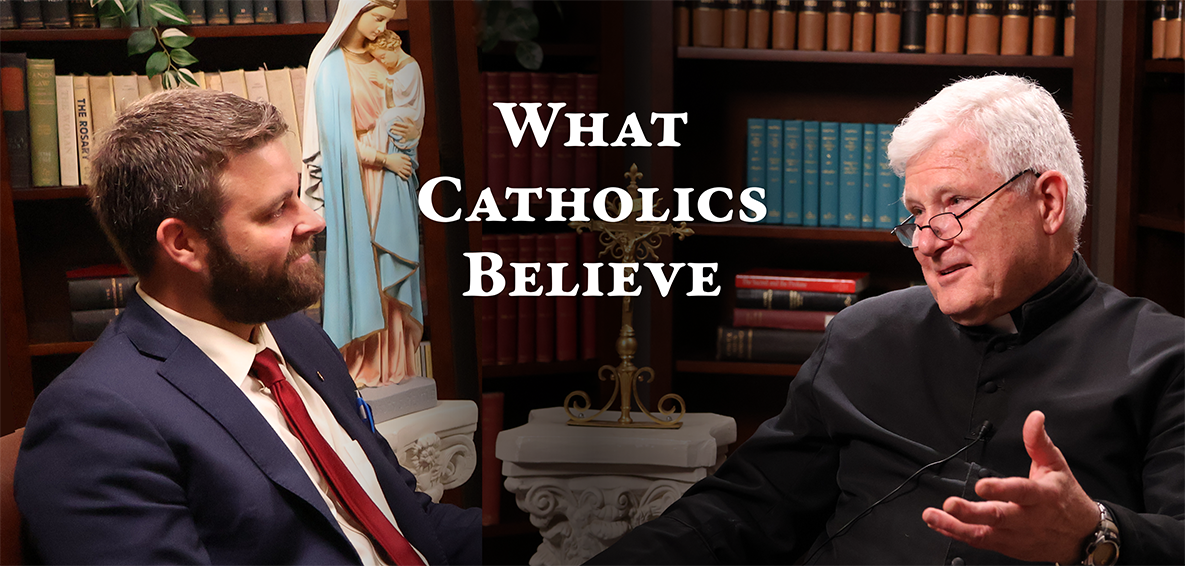The Third Sunday of Lent
The holy Church gave us, as the subject of our meditation for the first Sunday of Lent, the Temptation which our Lord Jesus Christ deigned to suffer in the Desert. Her object was to enlighten us with regard to our own temptations, and teach us how to conquer them. To-day, she wishes to complete her instruction on the power and stratagems of our invisible enemies; and for this she reads to us a passage from the Gospel of St. Luke. During Lent, the Christian ought to repair the past, and provide for the future; but he can neither understand how it was he fell, nor defend himself against a relapse, unless he have correct ideas as to the nature of the dangers which have hitherto proved fatal, and are again threatening him. Hence, the ancient Liturgists would have us consider it as a proof of the maternal watchfulness of the Church, that she should have again proposed such a subject to us. As we shall find, it is the basis of all to-day’s instructions.
Assuredly, we should be the blindest and most unhappy of men, if, - surrounded as we are by enemies, who unceasingly seek to destroy us, and are so superior to us both in power and knowledge, - we were seldom or never to think of the existence of these wicked spirits. And yet, such is really the case with innumerable Christians nowadays; for, truths are diminished from among the children of men [Ps. xi. 2].
So common, indeed, is this heedlessness and forgetfulness of truth, which the Holy Scriptures put before us in almost every page, that it is no rare thing to meet with persons who ridicule the idea of Devils being permitted to be on this earth of ours! They call it a prejudice, a popular superstition, of the Middle-Ages! Of course they deny that it is a dogma of Faith. When we read the History of the Church or the Lives of the Saints, they have their own way of explaining whatever is there related on this subject. To hear them talk, one would suppose that they look upon Satan as a mere abstract idea, to be taken as the personification of evil.
When they would account for the origin of their own or others’ sins, they explain all by the evil inclination of man’s heart, and by the bad use we make of our free-will. They never think of what we are taught by Christian doctrine; namely, that we are also instigated to sin by a wicked being, whose power is as great as is the hatred he bears us. And yet, they know, they believe, with a firm faith, that Satan conversed with our First Parents, and persuaded them to commit sin, and showed himself to them under the form of a serpent. They believe, that this same Satan dared to tempt the Incarnate Son of God, and that he carried him through the air, and set him first upon a pinnacle of the Temple, and then upon a very high mountain. Again; they read in the Gospel, and they believe, that one of the Possessed, who were delivered by our Saviour, was tormented by a whole legion of devils, who, upon being driven out of the man, went, by Jesus’ permission, into a herd of swine, and the whole herd ran violently into the sea of Genesareth, and perished in the waters. These, and many other such like facts, are believed, by the persons of whom we speak, with all the earnestness of faith; yet, notwithstanding, they treat as a figure of speech, or a fiction, all they hear or read about the existence, the actions, or the craft of these wicked spirits. Are such people Christians, or have they lost their senses? One would scarcely have expected that this species of incredulity could have found its way into an age like this, when sacrilegious consultations of the devil have been, we might almost say, - fashionable. Means, which were used in the days of paganism, have been resorted to for such consultations; and they who employed them seemed to forget, or ignore, that they were committing what God in the Old Law Old Law, punished with death, and which, for many centuries, was considered by all Christian nations as a capital crime.
Excerpted from The Liturgical Year by Dom Prosper Guéranger

